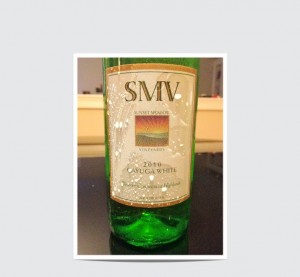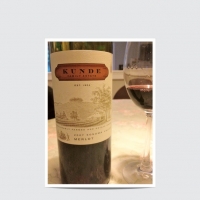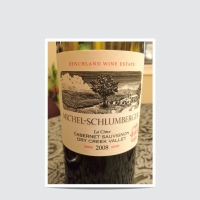
Bliss Family Vineyards Chardonnay
Most of us are familiar with the word “organic” and have a fairly knowledgeable idea of what it means with respect to agriculture. However, in spite of the fact that the word “sustainable” is becoming an equally familiar term, fewer of us have a clear understanding of what that actually means in relation to agriculture generally, and to growing wine grapes specifically. The criteria for organic growing are black and white and organizations exist around the world to monitor and police these rules, but when it comes to sustainability, one must abandon the notion of black and white and instead adopt a philosophy made up of many shades of grey that takes into consideration the impact on our environment of various farming practices. Sustainability also includes an analysis of social goals as well as economic viability. Although this lack of a specific definition may seem frustrating at times, it is exactly this amorphous quality that is the essence of sustainable agriculture.
The very nature of the concept of sustainability means that the term will have different definitions at different times and in different places. For simplicity, the definition can be thought of as a balancing test: What at this given moment in time at this specific location would have the least negative impact on the environment and on our society, taking into consideration alternative solutions and factoring in the importance of maintaining a viable business.

Sunset Meadow Vineyards Cayuga White (located in Goshen, CT)
Many wineries advertising sustainable farming publicize examples that include such things as beekeeping, free-range chickens and goats, and the erection of bird nesting boxes and raptor perches. All of these efforts are meant to strengthen and enhance the surrounding ecosystems with the desired result of creating a stronger and healthier environment in which to grow vines. Although these efforts can have a positive impact on the environment, the less glamorous balancing test is in fact the heart of sustainability. Take, for example, the issue of weeding. Organics eschew the use of chemical herbicides to control the growth of weeds between the rows of vines. An organic farmer might opt instead to mulch these areas. Our sustainable farmer, on the other hand, will take into consideration not only the effect of agrochemicals on the environment but also the effect of using diesel fuel during the mulching process. This farmer might reasonably decide that it is more environmentally sound overall (more sustainable) to use infrequent applications of a mild herbicide to control weeds than it is to use additional diesel fuel to take extra passes with a tractor.
Like organic growing, sustainable agriculture attempts to leave the land for the next generation in better condition than it was when it was inherited. But sustainability goes one step farther in its consideration of the environment’s long-term future by addressing issues that organic principles do not, such as global warming, water usage and greenhouse gases. There is currently a movement to create certification standards for sustainable practices. And while this will be a positive step toward giving recognition to those implementing these procedures, I can only imagine the enormity of the task of codifying the many shades of grey that make up sustainable agriculture. While I wait, I will continue to support my environment by seeking out and enjoying sustainably grown wines.

Benziger Family Chardonnay
Want to support the environment with every sip? Why not start with one of these sustainable vineyards:
- Bliss Family Vineyards, Mendocino, California
- Michel-Schlumerger, Dry Creek Valley, California
- Bodegas Carrau, Montevideo, Uruguay
- Benziger Family, Carneros, California
- Kunde Family Estate, Sonoma Valley, California
- Sunset Meadow Vineyards, Goshen, Connecticut
- Château Tanesse, Cadillac, France


